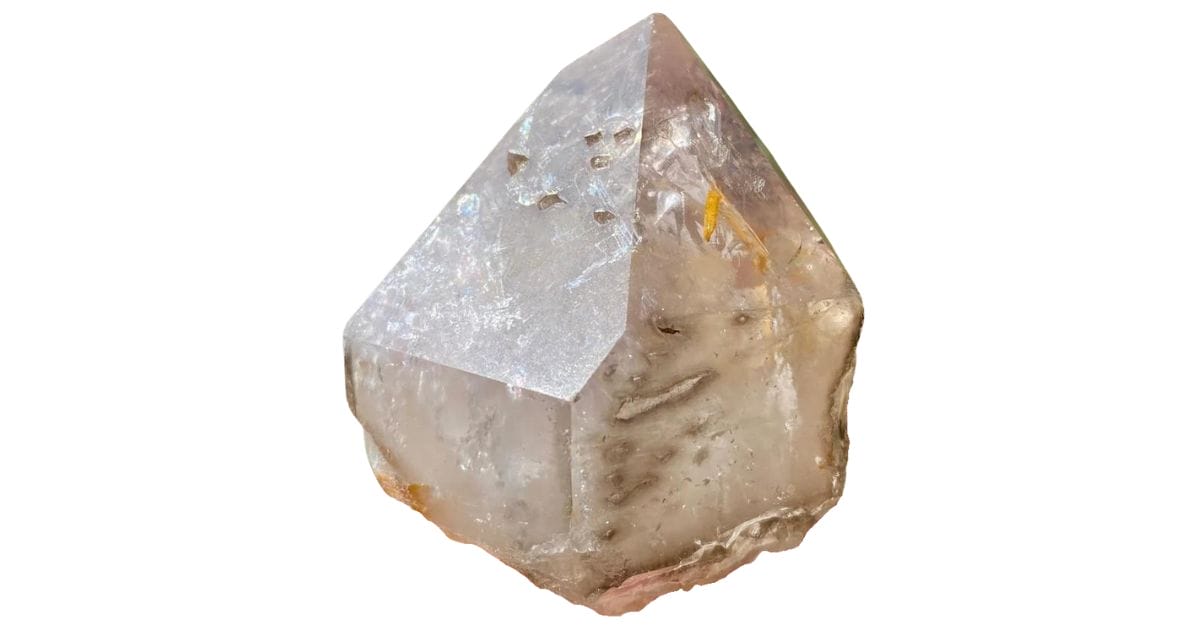New Hampshire is known for its diverse natural landscape, which includes a variety of types of rocks found in New Hampshire, minerals, and gems. Among these natural resources, beryl, almandine, and gold stand out for their beauty and value.
Finding these resources can be quite challenging without knowing what to look for or where to search. Knowledge about these materials is crucial for anyone interested in exploring New Hampshire’s natural treasures.
Understanding the characteristics of beryl, almandine, and gold can increase your chances of finding them. Each has specific locations and conditions where they are more likely to be found, making the search an exciting adventure.
A List of The Common Rocks, Stones, and Minerals Found in New Hampshire
New Hampshire is full of natural beauty, including a wide variety of rocks and minerals. Learn more about the rocks and minerals that you can come across in the state:
The New Hampshire State Rock, Mineral, and Gem
These are the rock, mineral, and gem that represent New Hampshire’s geology:
| New Hampshire State Rock | Granite |
| New Hampshire State Mineral | Beryl |
| New Hampshire State Gem | Smoky Quartz |
Rockhounding in New Hampshire can be a fun adventure, but it’s important to know the rules and guidelines.
The New Hampshire Department of Environmental Services (NHDES) provides helpful tips and guidelines for rock collecting to ensure that everyone can enjoy this activity responsibly.
Almandine
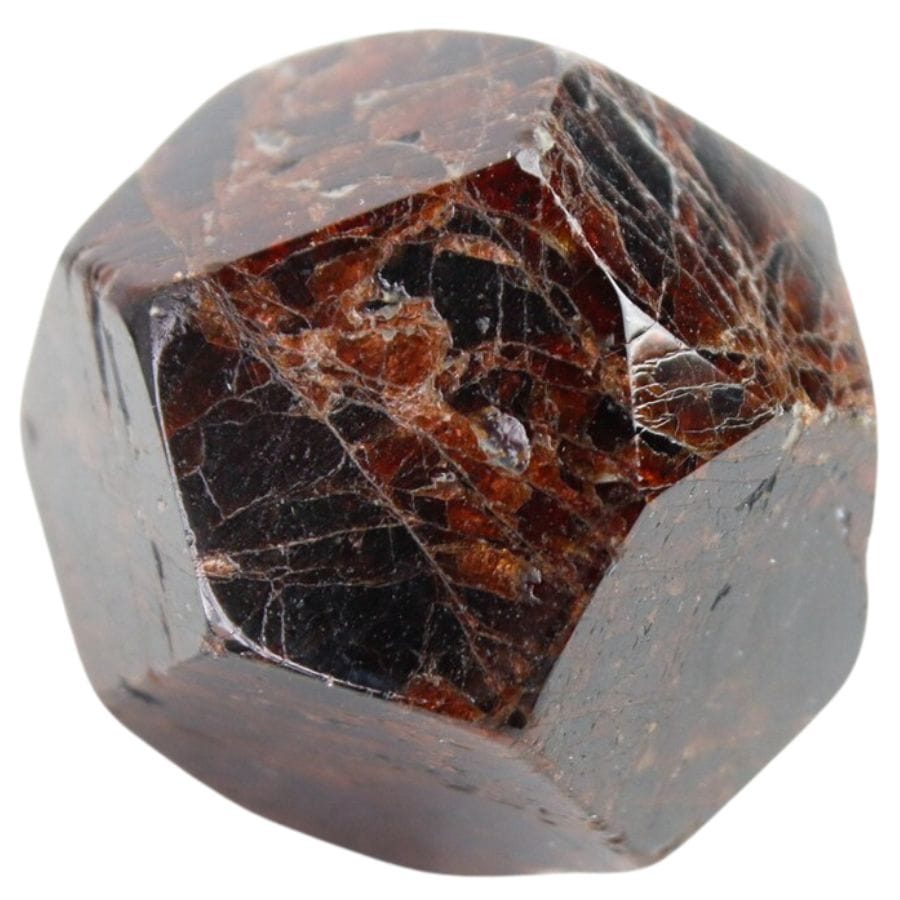
Almandine is a type of garnet that is known for its deep red color, which can sometimes appear almost purple. It is commonly found in metamorphic rocks, where high pressure and temperature conditions cause minerals to transform.
Almandine has interesting characteristics, including its hardness, which makes it durable enough for various uses. It is often used in jewelry because of its beautiful color and sparkle.
Additionally, almandine can be used as an abrasive material. Its hardness allows it to efficiently polish and smooth other materials, making it valuable in industrial applications.
Where you can find almandine in New Hampshire
- Grafton County
- Alstead
- Gilsum
- Danbury
Fluorite
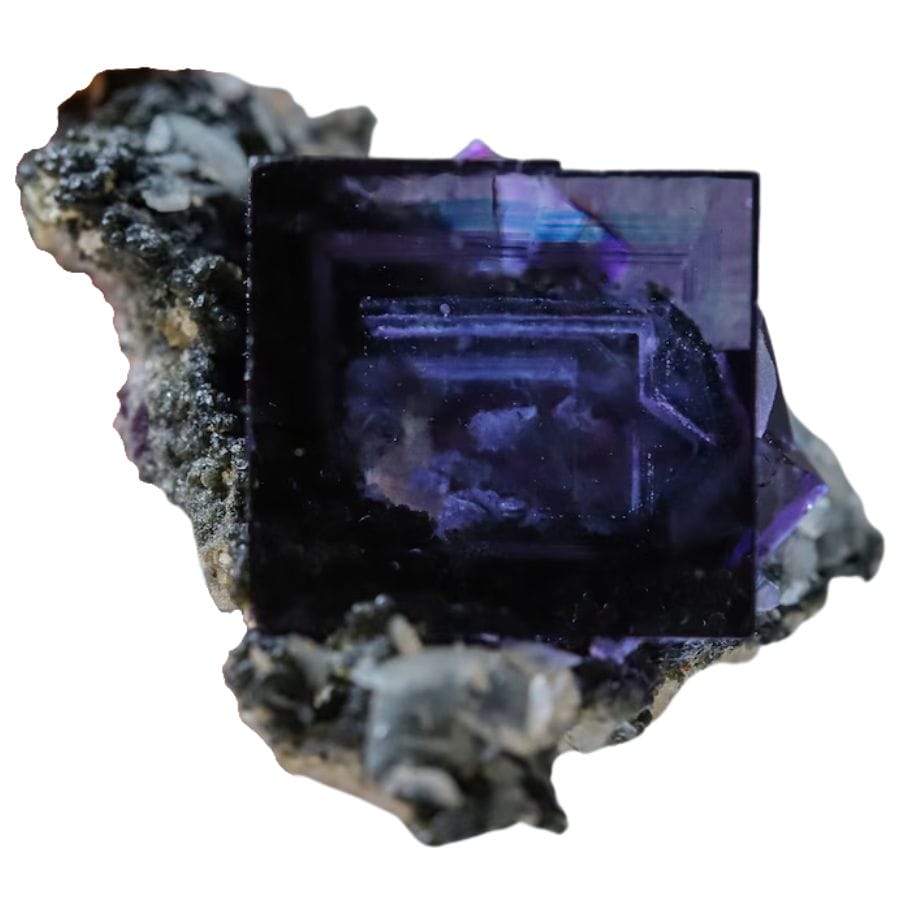
Fluorite is a colorful mineral that comes in shades of purple, green, yellow, and blue. It forms in places where hot water flows through cracks in rocks, depositing the mineral in layers.
Fluorite is known for its ability to fluoresce, or glow, under ultraviolet light, which makes it popular among collectors. The mineral is also prized for its geometric shapes, often forming cubes that are interesting to look at.
The price of fluorite depends on its quality and color, with some pieces being more valuable for their clarity and vibrant hues. It is used in the manufacture of certain glasses and enamels, improving their properties and making them more efficient.
Where you can find fluorite in New Hampshire
- Blue Mountain
- Redstone
- Iron Mountain
- Hooksett
Granite
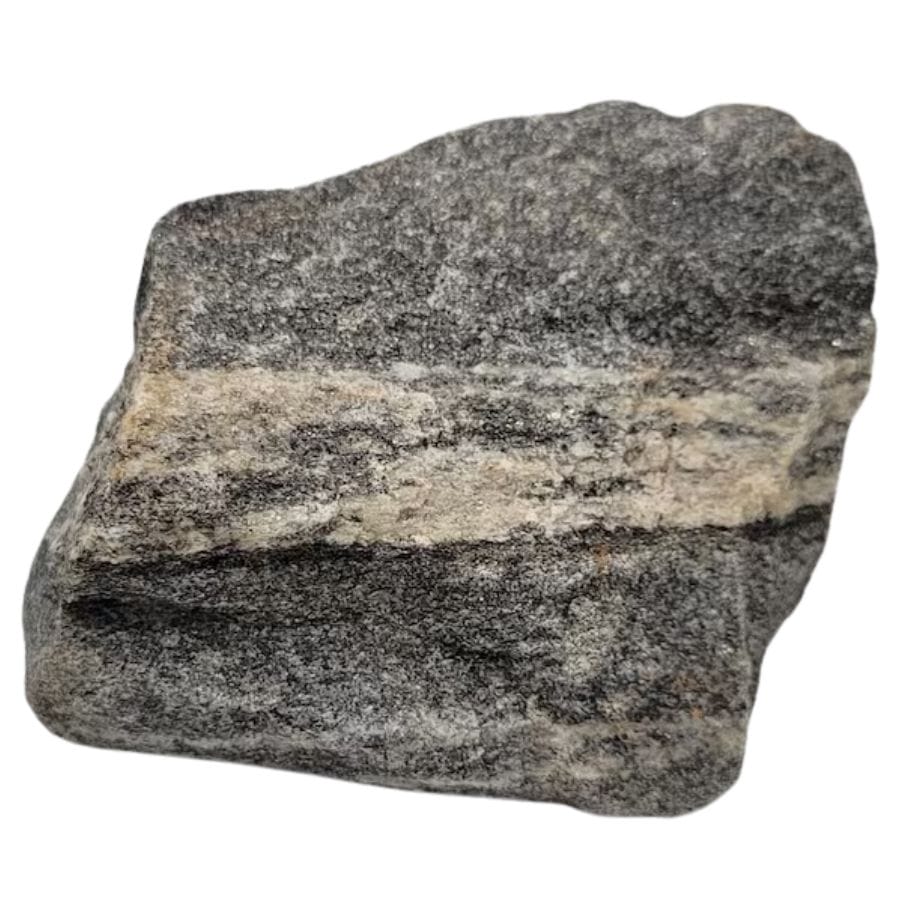
Granite is a hard, durable rock made up of quartz, feldspar, and mica. It forms deep within the Earth’s crust when magma cools slowly, allowing large crystals to grow.
Granite has a grainy appearance with different colors, depending on the minerals present. This variety makes it a favorite for countertops and decorative elements in homes.
Because of its strength, granite is also used in construction, for building bridges, monuments, and as a base material for roads. Its durability ensures structures can withstand the test of time and weather.
Where you can find granite in New Hampshire
- Hillsborough County
- Rochester
- Croydon
- Alstead
Magnetite
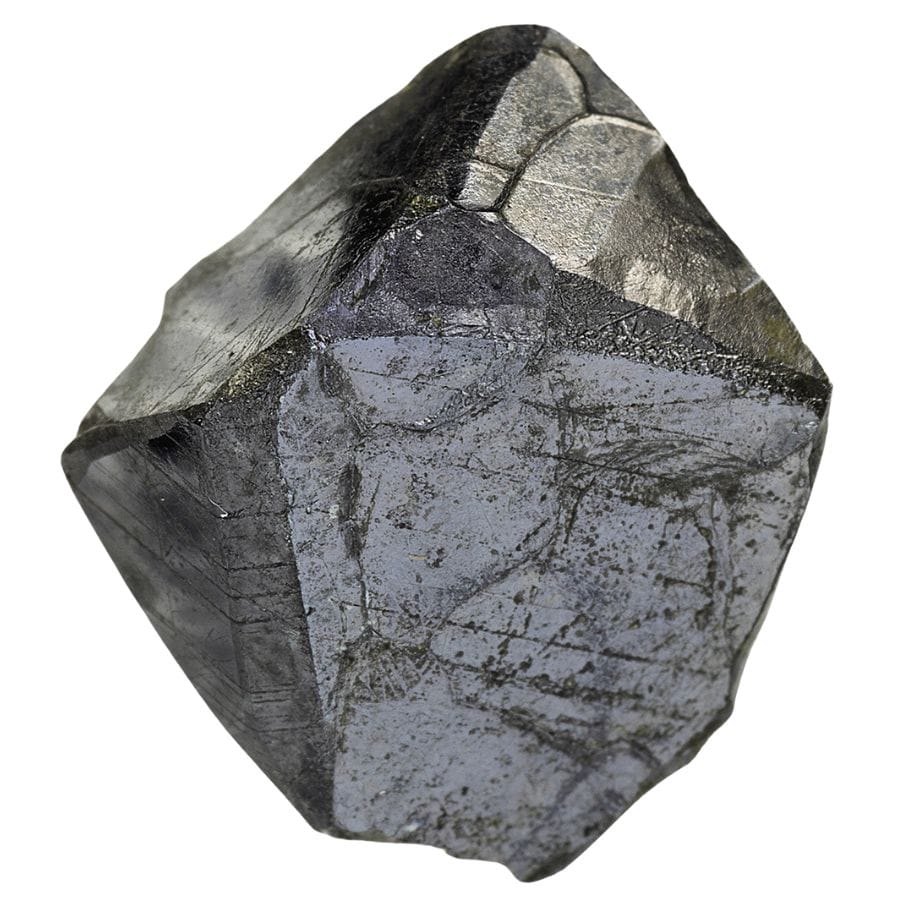
Magnetite is a magnetic mineral made of iron and oxygen. It often forms in volcanic rocks where hot magma cools down.
Magnetite is special because it is one of the few minerals that are attracted to a magnet. This feature makes it easy to identify and fun to find for collectors.
In industry, magnetite is used to make iron and steel. Its magnetic properties also make it useful in electronics and in creating compasses.
Where you can find magnetite in New Hampshire
- Carroll County
- Gilford
- Alstead
- Sugar Hill
Malachite
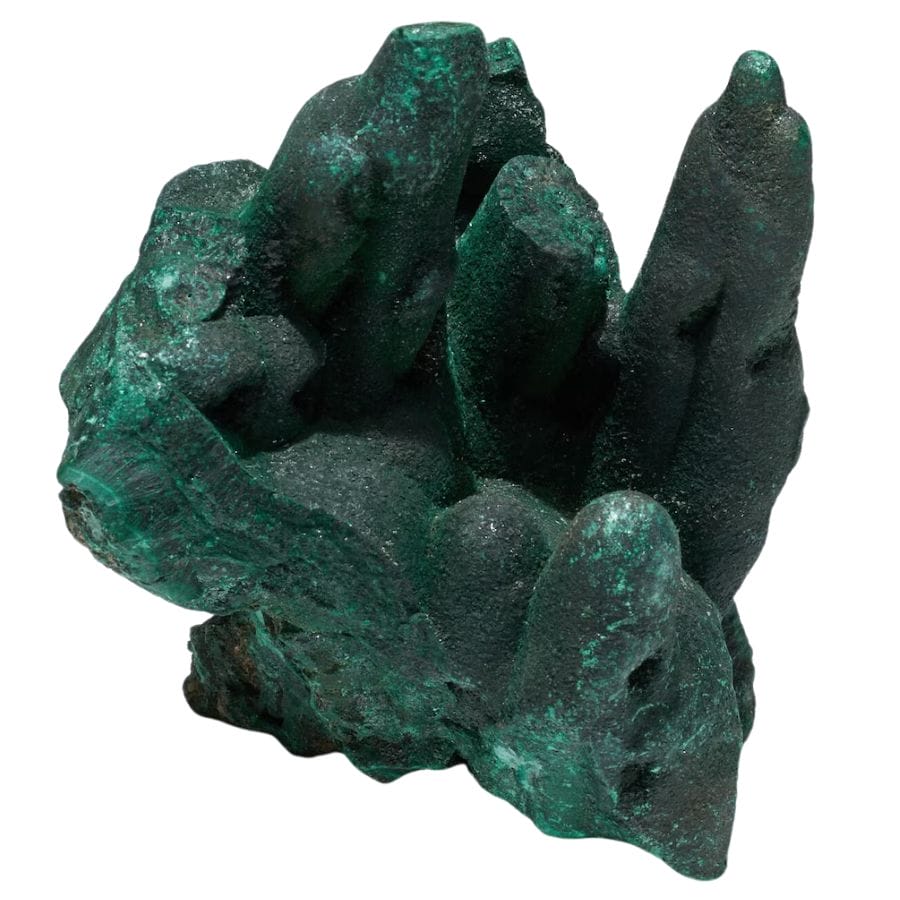
Malachite is a green mineral that gets its color from copper. It usually grows in areas where copper ores are found, transforming over time with water and carbon dioxide.
Malachite is known for its vibrant green color and beautiful patterns that look like waves or bands. These patterns make malachite popular for making jewelry and decorative items.
Besides its use in crafts, malachite has a history of being ground up to make green pigment. While not among the common rocks and minerals found in New Hampshire, malachite still captures the interest of collectors and artists worldwide.
Where you can find malachite in New Hampshire
- Wakefield
- Westmoreland
- Amherst
- Raymond
Pyrite
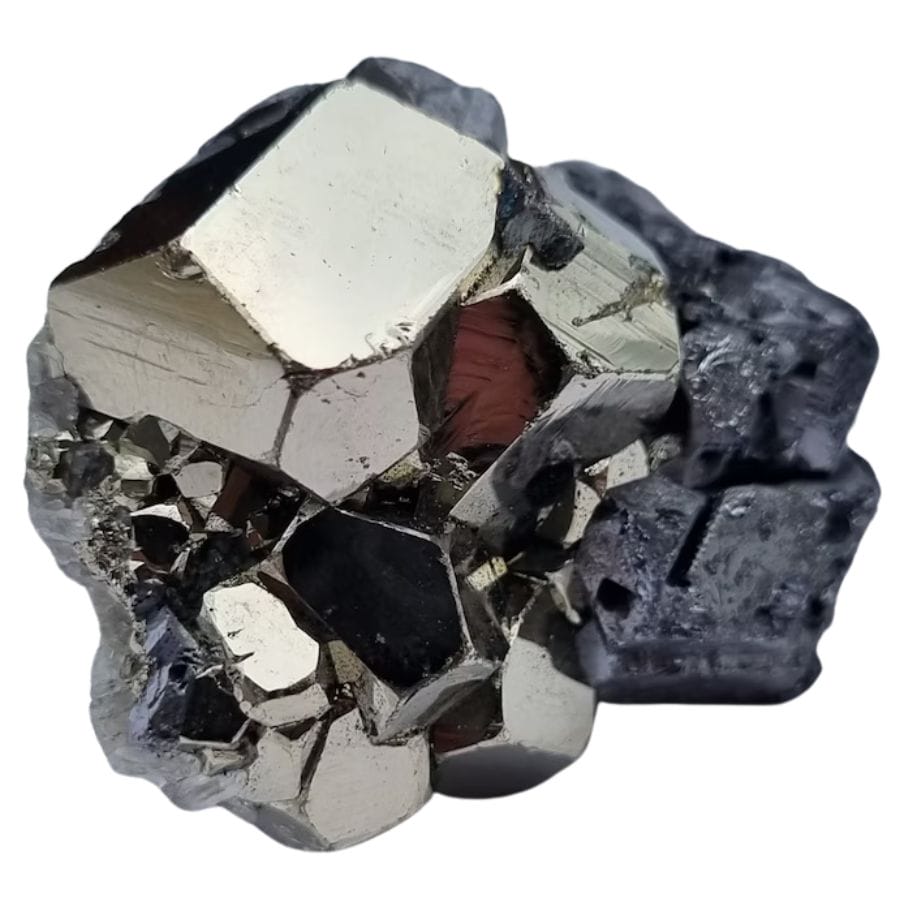
Pyrite, often called fool’s gold, is a shiny, yellow mineral made of iron and sulfur. It gets its nickname because its metallic luster and golden color can make it look like real gold to the untrained eye.
This mineral forms in various environments, often near quartz and other sulfide minerals. Pyrite can create sparks when struck against metal or stone, which made it useful in early firearms for starting fires.
Today, pyrite is used in jewelry and as a decorative stone. Its presence can also indicate the possible location of gold, leading miners to explore areas where pyrite is found.
Where you can find pyrite in New Hampshire
- Westmoreland
- Groton
- Coos County
Smoky Quartz
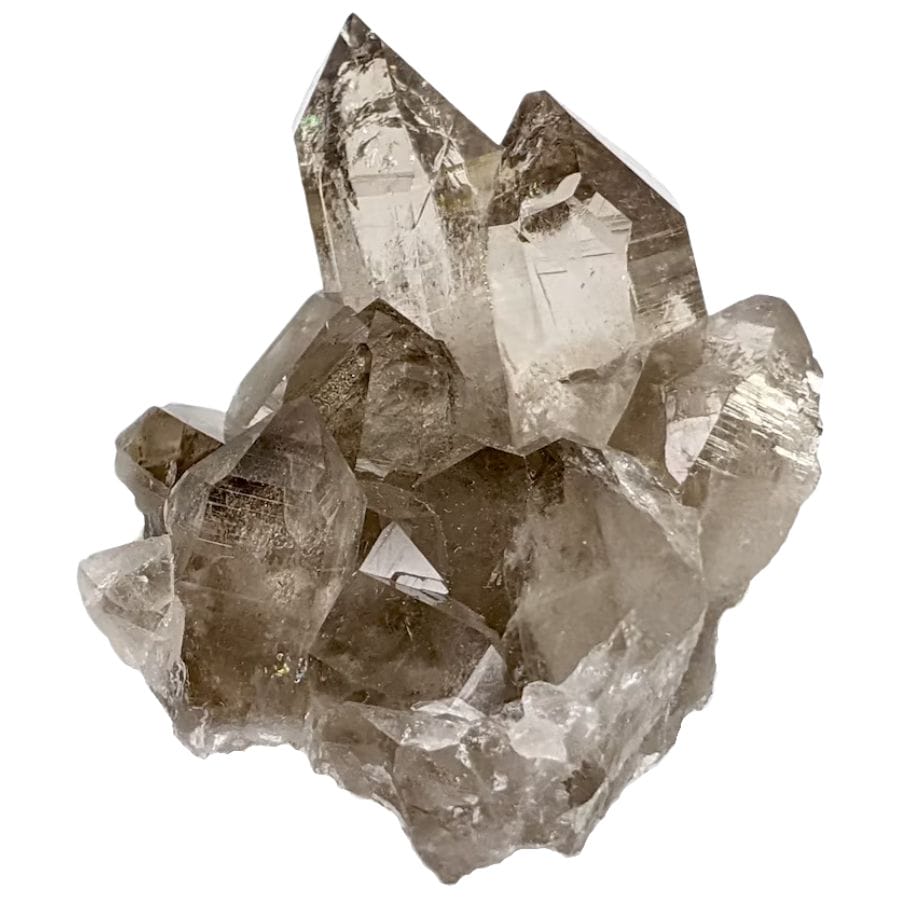
Smoky quartz is a type of quartz that ranges in color from light gray to almost black. It gets its smoky color from natural radiation from the earth interacting with aluminum traces in the crystal.
This gemstone is admired for its transparency and glossy luster, making it popular in jewelry and decorative items. Smoky quartz is found in many parts of the world, often in the same areas where crystals like amethyst are mined.
In addition to its aesthetic use, smoky quartz is believed to have grounding properties. It is used in various forms of holistic healing, thought to help release negative emotions and bring emotional calmness.
Where you can find smoky quartz in New Hampshire
- Carroll County
- Gilford
- Alexandria
- Long Mountain
The Gemstones Found in New Hampshire
New Hampshire’s gems offer a fascinating glimpse into the geological processes that have shaped the region over millions of years. Find out more with these guides:
Amethyst
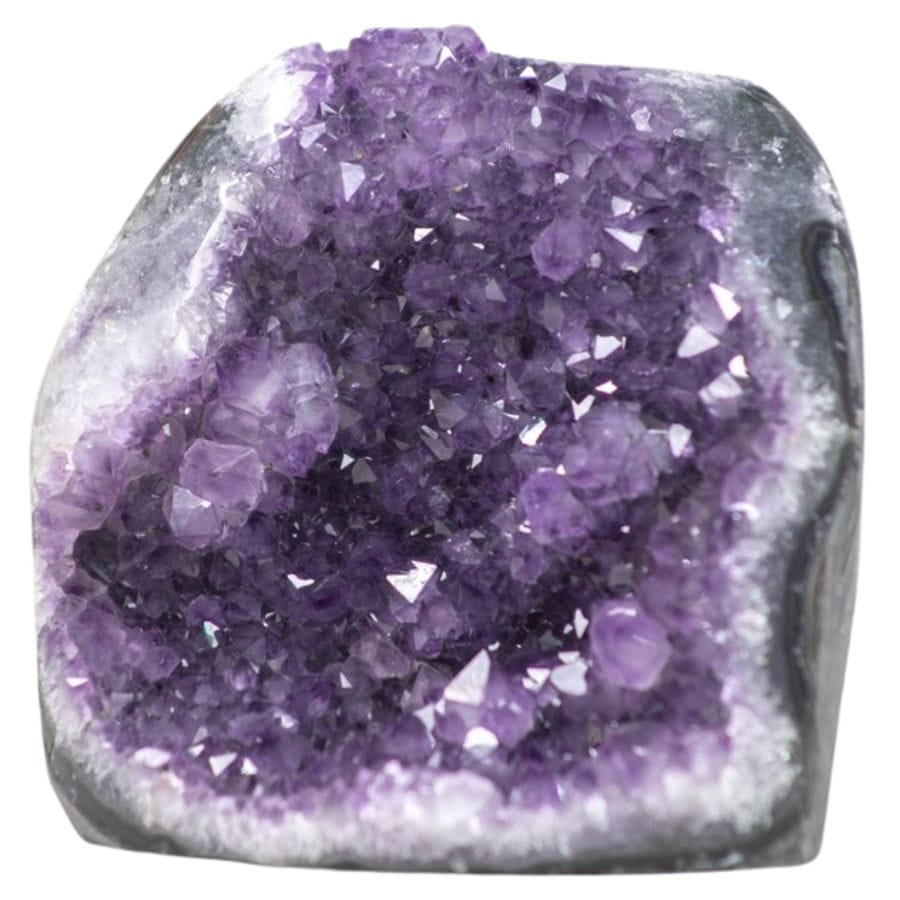
Amethyst is a type of quartz that is purple in color. The purple color comes from iron impurities and exposure to radiation from the earth.
Amethyst is known for its beautiful purple shades, which can range from a light lavender to a deep violet. It is often used in jewelry because of its striking color and durability.
Besides being a favorite gemstone for rings, necklaces, and earrings, amethyst has a long history of being associated with calming and soothing properties. Many believe it can help with emotional balance and is used in meditation practices.
Where you can find amethyst in New Hampshire
- Long Mountain
- Table Mountain
- Ossipee
Apatite
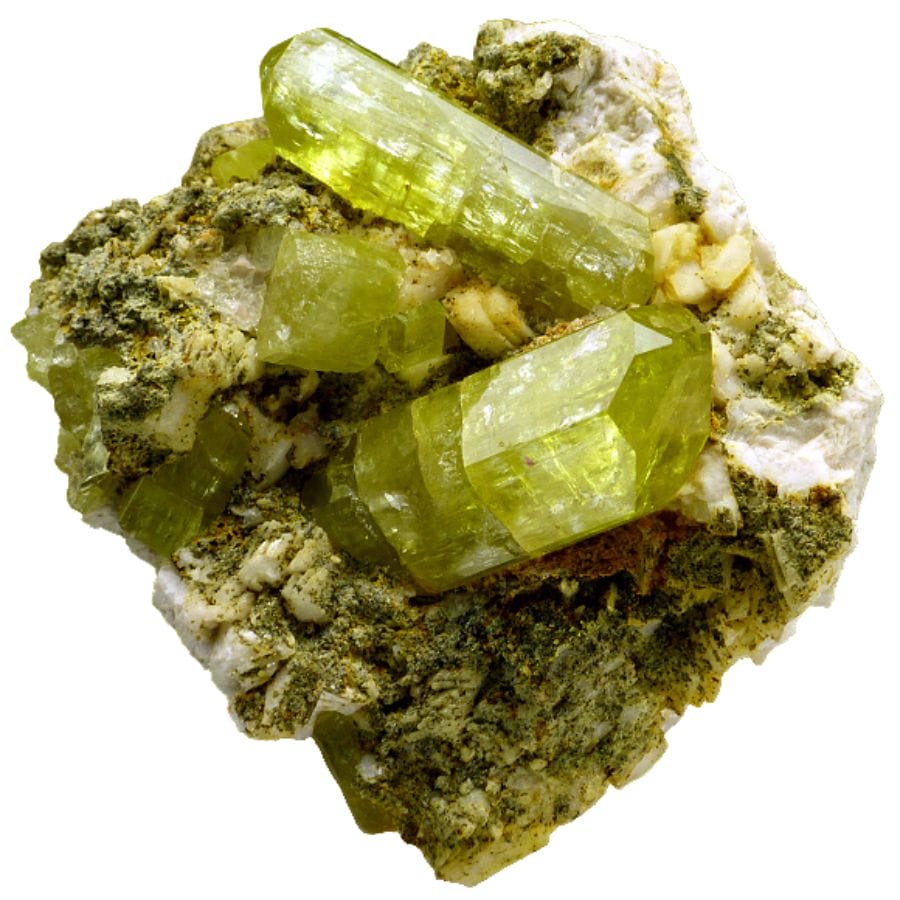
Apatite is a mineral that comes in many colors, including blue, green, and yellow. It is often found in igneous and metamorphic rocks around the world.
Apatite is known for its glassy luster and can look similar to more precious gemstones, making it popular in jewelry. It is relatively soft compared to other gemstones, so it requires careful handling.
In addition to being used in jewelry, apatite has a practical use in the production of fertilizer. Its high phosphorus content makes it valuable for encouraging plant growth.
Where you can find apatite in New Hampshire
- Cheshire County
- Orange
- Milford
- Red Hill
Beryl
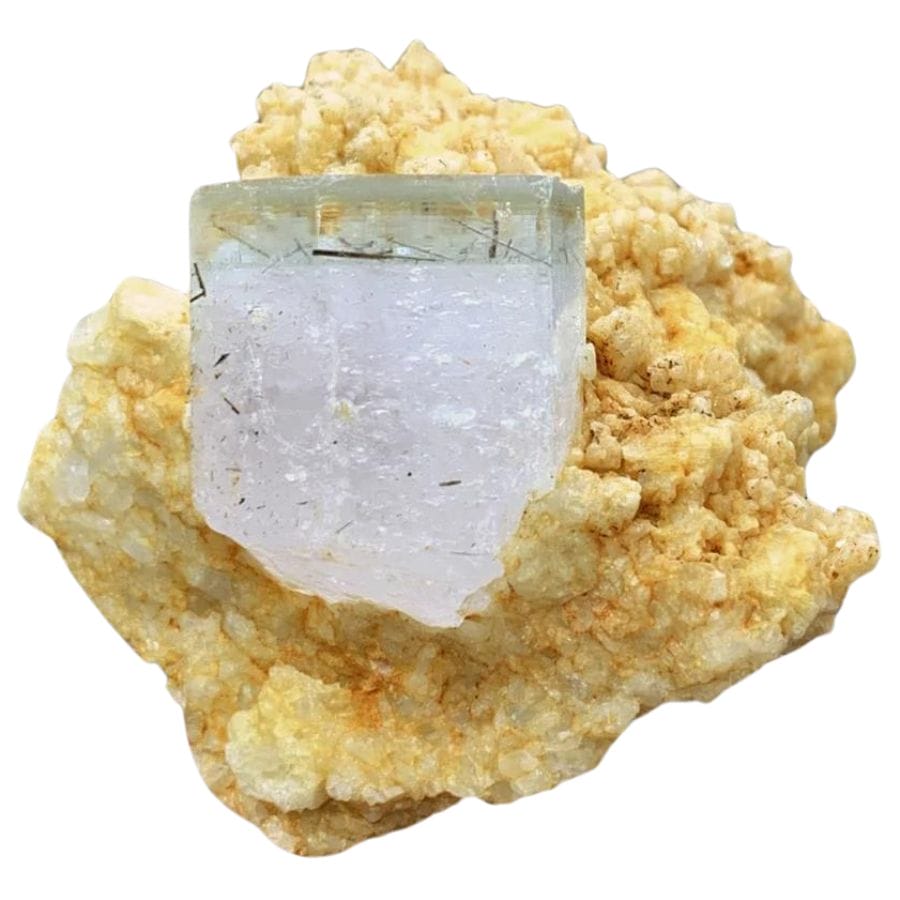
Beryl is a mineral that comes in various colors, including green, blue, yellow, and pink. The color depends on the types of impurities that are present in the mineral.
The most well-known variety of beryl is emerald, which is prized for its vibrant green color. Another popular type is aquamarine, which has a beautiful blue hue.
Beryl is used mainly in jewelry because of its range of attractive colors and clarity. It is also valued for its hardness, which makes it durable enough for everyday wear.
Where you can find beryl in New Hampshire
- Merrimack County
- Alstead
- Alexandria
- Grafton
Kyanite
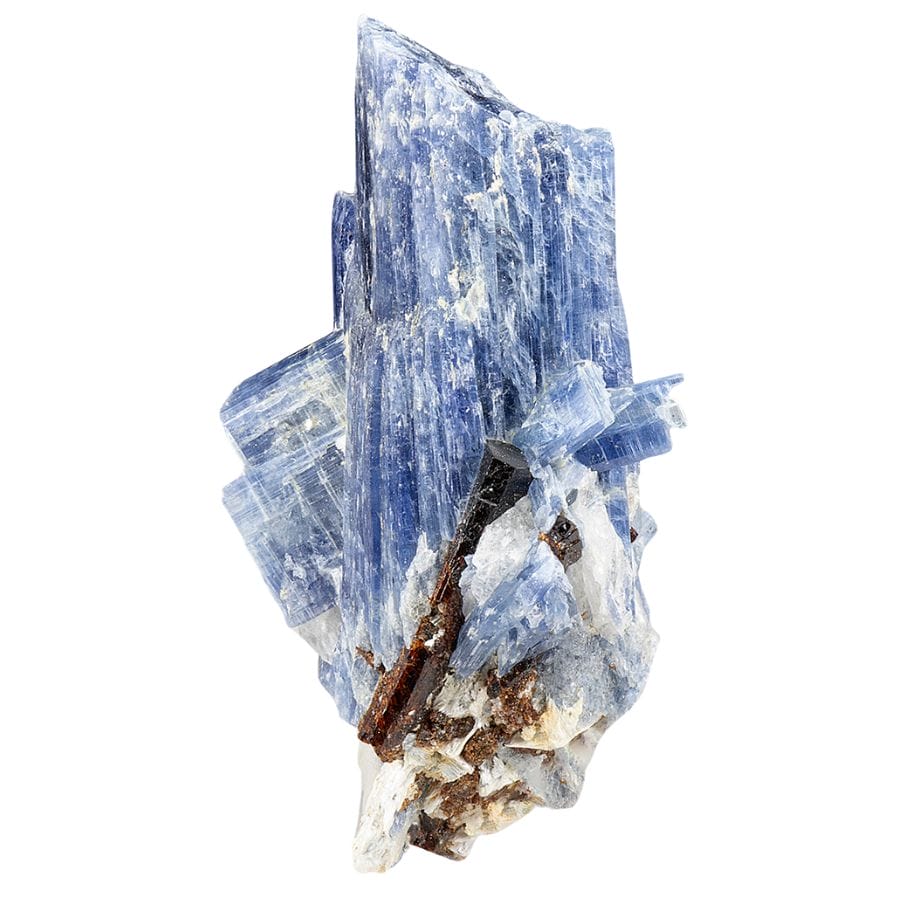
Kyanite is a mineral that is typically blue but can also be found in green, black, and orange colors. It usually forms during the high-pressure alteration of clay minerals in sedimentary rocks.
Kyanite stands out because it has two different hardnesses on its perpendicular axes. This means it can be harder along the length of the crystal and softer across it, making it a challenge to cut for jewelry.
Despite this, kyanite is still used in jewelry and as a decorative stone. It is also one of the gemstones found in New Hampshire, where collectors might find beautiful specimens for their collections.
Where you can find kyanite in New Hampshire
- Chesterfield
- Westmoreland
- Lisbon
Schorl
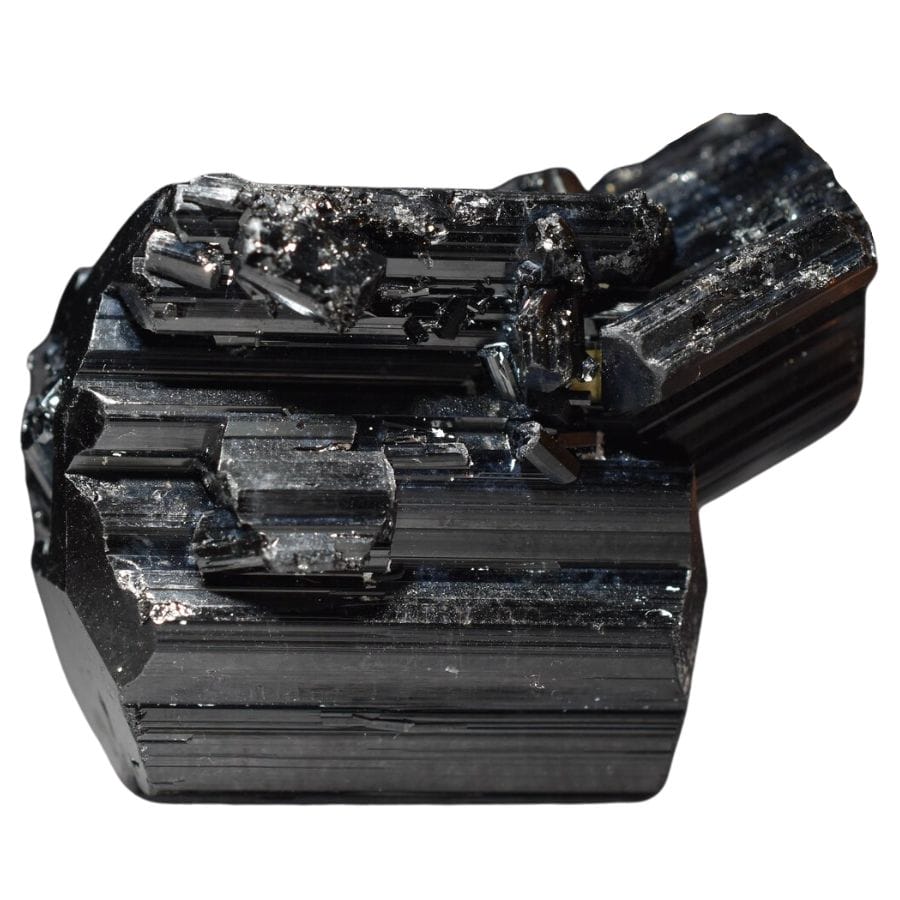
Schorl is a black variety of tourmaline, and it is the most common type of tourmaline found in nature. It forms in a variety of rock types, often in granite and metamorphic rocks, where it grows in long, slender crystals.
Schorl is known for its deep black color and glassy luster, making it easily recognizable. Despite its darkness, it can have a striking appearance when polished or used in jewelry.
Besides its use in jewelry, schorl has industrial applications due to its piezoelectric and pyroelectric properties. These properties allow it to generate an electric charge under pressure or when heated, making it useful in certain electronic devices.
Where you can find schorl in New Hampshire
- Grafton
- Parker Mountain
- Alstead
Topaz
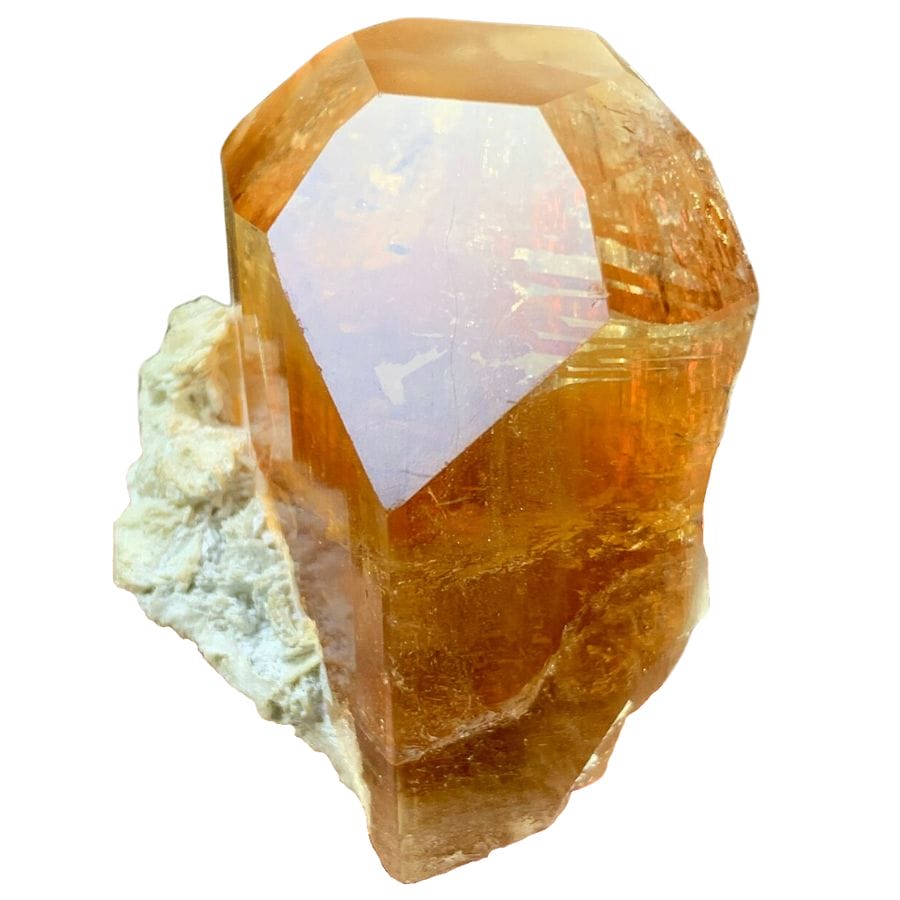
Topaz is a gemstone that comes in a variety of colors, including blue, yellow, pink, and sometimes colorless. It is found in granite rocks and in the cavities of lava flows.
Topaz is known for its hardness, which makes it durable enough for all kinds of jewelry. It also has a beautiful shine that catches the light, making it very attractive.
Besides being used in jewelry, topaz can be used in industrial applications due to its properties. For example, it is sometimes used in the manufacture of abrasives and cutting tools.
Where you can find topaz in New Hampshire
- Albany
- Bald Mountain
- Berlin
Zircon
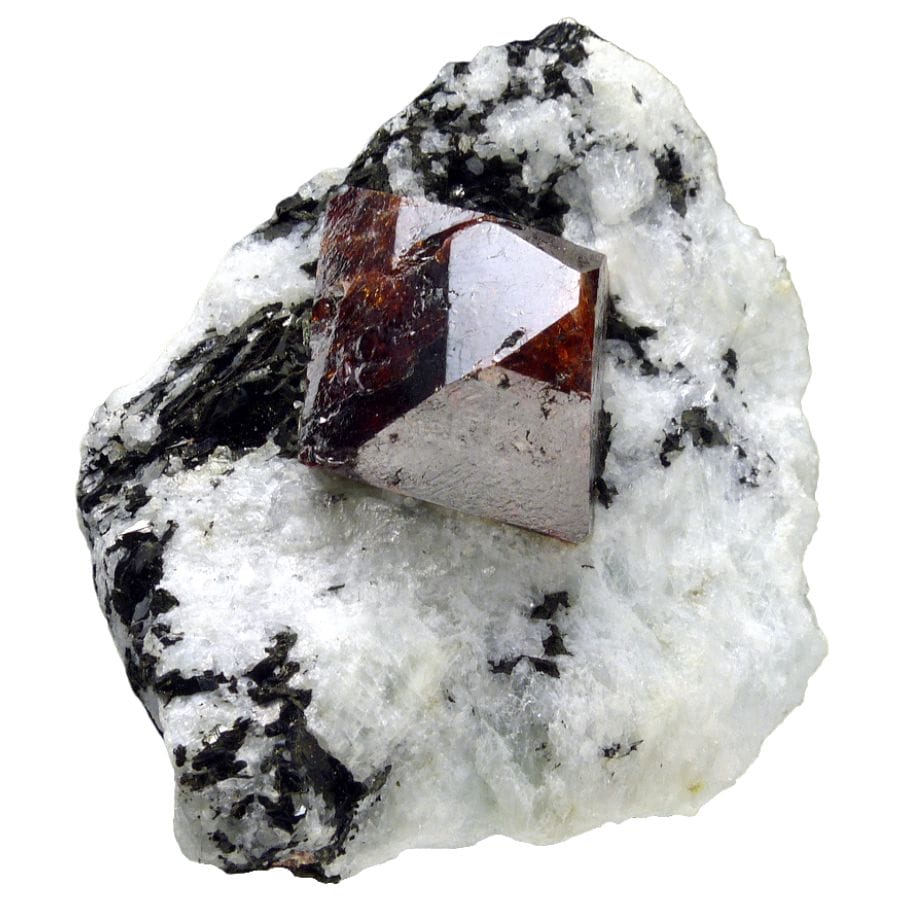
Zircon is a mineral that comes in many colors, including red, yellow, brown, and blue. It forms in igneous rocks as crystals that can survive erosion and transport.
Zircon is valued for its brilliance and fire, making it a popular choice for jewelry. The blue variety, often treated to enhance its color, is especially sought after.
Besides its use in jewelry, zircon serves important roles in industrial applications. It’s used in the production of ceramics and refractory materials, thanks to its high resistance to heat and corrosion.
Where you can find zircon in New Hampshire
- Hurricane Mountain
- Bald Mountain
- Groton
The Crystals Found in New Hampshire
New Hampshire is a great place for anyone interested in the natural world, especially those who enjoy looking for crystals. You can find more information with this guide:
Amazonite
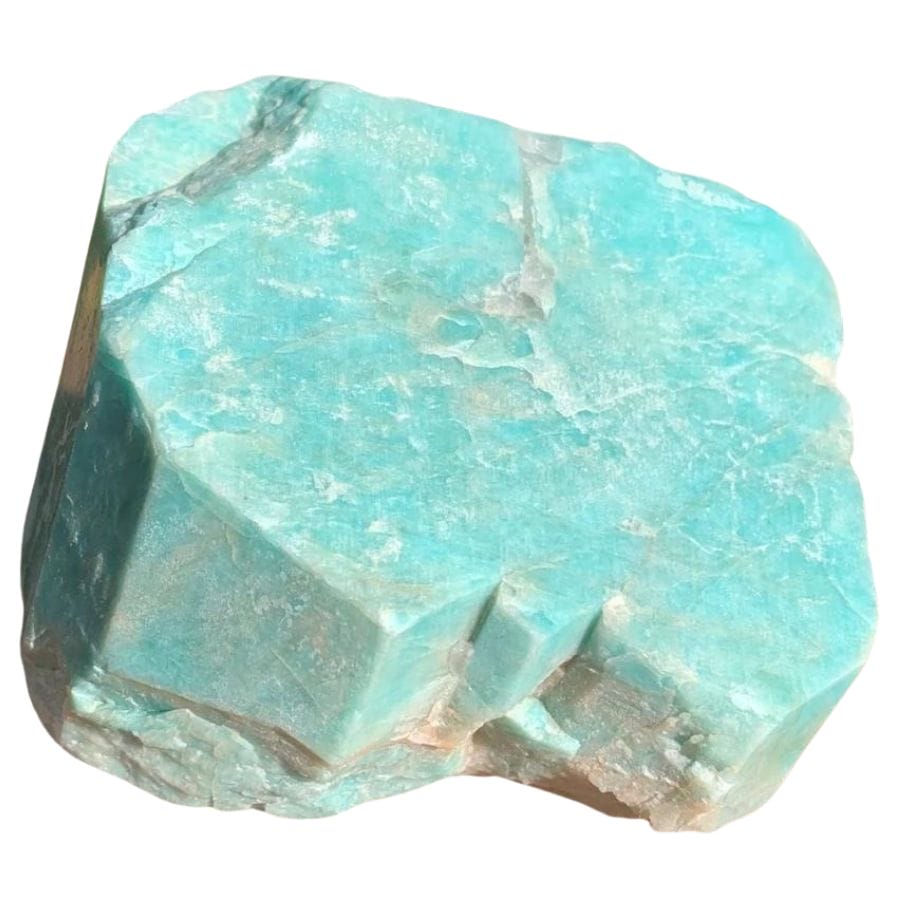
Amazonite is a green to blue-green variety of feldspar, giving it a striking appearance. It gets its color from small amounts of lead and water in its structure.
This mineral is known for its smooth, glass-like luster and is often cut into cabochons or beads for jewelry. Amazonite is also popular among collectors for its bright color and crystal formations.
In addition to being used in jewelry, amazonite is sometimes used in decorative objects. Its calming color and attractive appearance make it a favorite for making things like tabletops, tiles, and other ornamental items.
Where you can find amazonite in New Hampshire
- Middle Moat Mountain
- Black Cap Mountain
- Conway
Andalusite
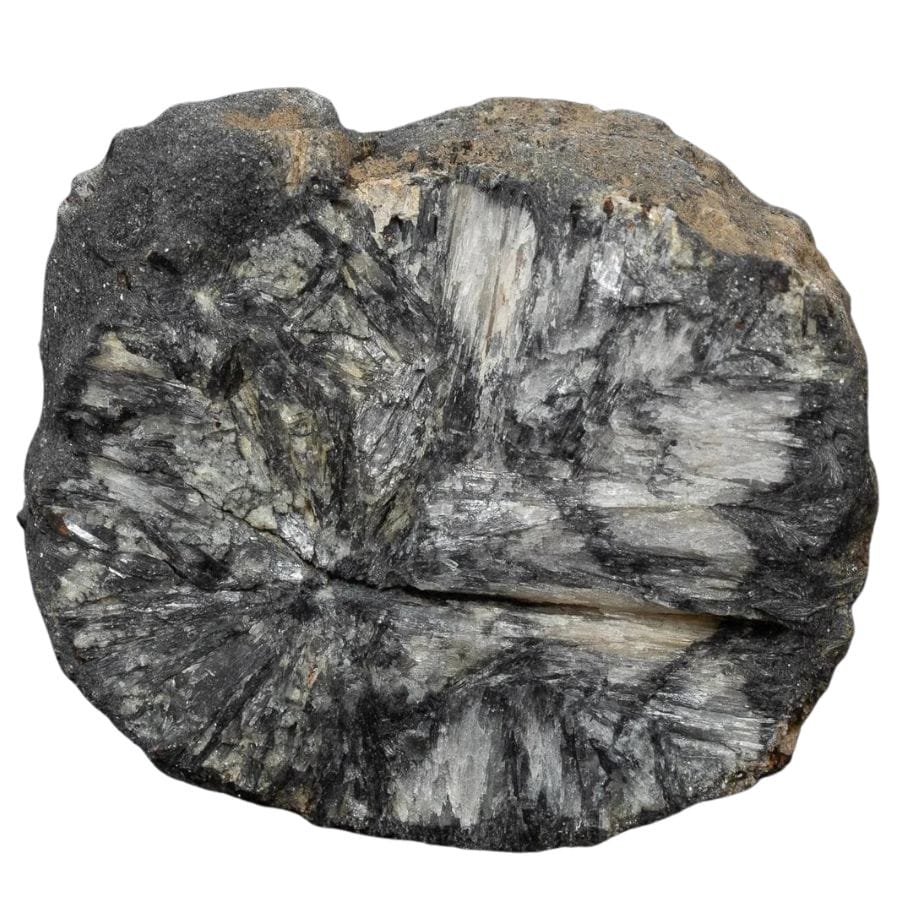
Andalusite is a mineral that changes color when viewed from different angles. This property is known as pleochroism, which makes it fascinating for jewelry making.
This mineral forms under high pressure and temperature in metamorphic rocks. Its colors range from yellowish-brown to greenish-brown, and it often contains distinctive cross-shaped inclusions.
Apart from being used in jewelry, andalusite has industrial applications. It’s used in the manufacture of high-temperature ceramics and refractories because it withstands high heat without melting.
Where you can find andalusite in New Hampshire
- Rockingham County
- Fall Mountain
- Lisbon
- Rochester
Linarite
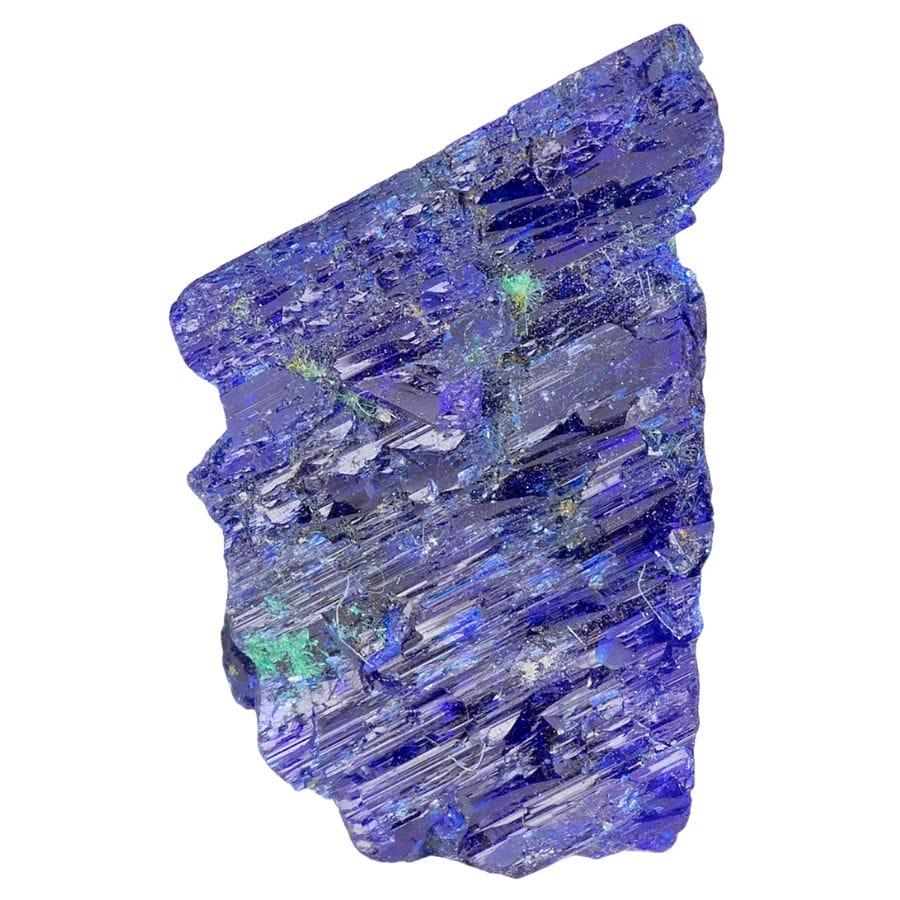
Linarite is a mineral known for its deep blue color. It forms in the oxidation zones of lead ore deposits where lead and copper react with oxygen and sulfur.
This mineral is sought after by collectors due to its vibrant color and crystal formations. Linarite crystals are usually small but can be quite detailed and beautiful.
While linarite is not commonly used in jewelry due to its softness, it is prized in mineral collections. Its striking blue hue adds a unique aspect to any collection, showcasing the variety of colors minerals can exhibit.
Where you can find linarite in New Hampshire
- Gorham
- Shelburne
- Wakefield
Siderite
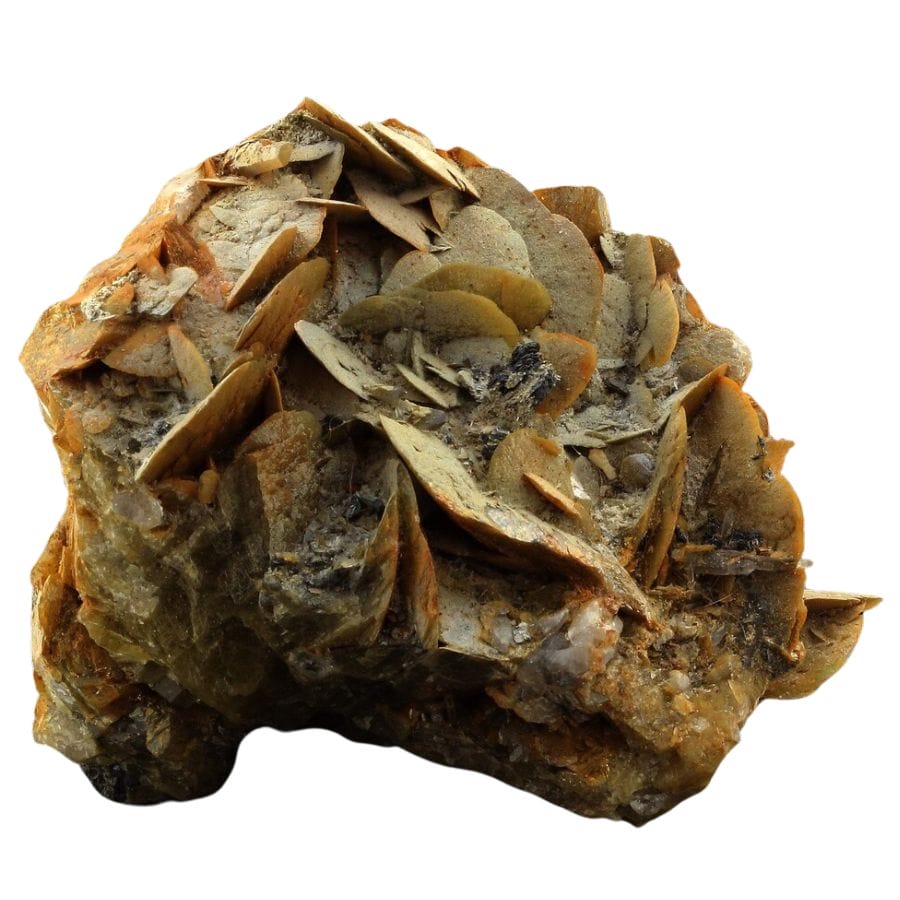
Siderite is a mineral that contains iron and has a yellowish to brownish color. It often forms in sedimentary environments where iron-rich waters precipitate the mineral.
This mineral can form beautiful crystals that are sought after by collectors. Siderite crystals found in New Hampshire are particularly well-known for their clarity and aesthetic appeal.
In addition to being a collector’s item, siderite is also used in the iron and steel industry. The iron within siderite can be extracted and used to make steel, making it an important resource.
Where you can find siderite in New Hampshire
- Ossipee
- Redstone
- Alexandria
- Raymond
Sphalerite
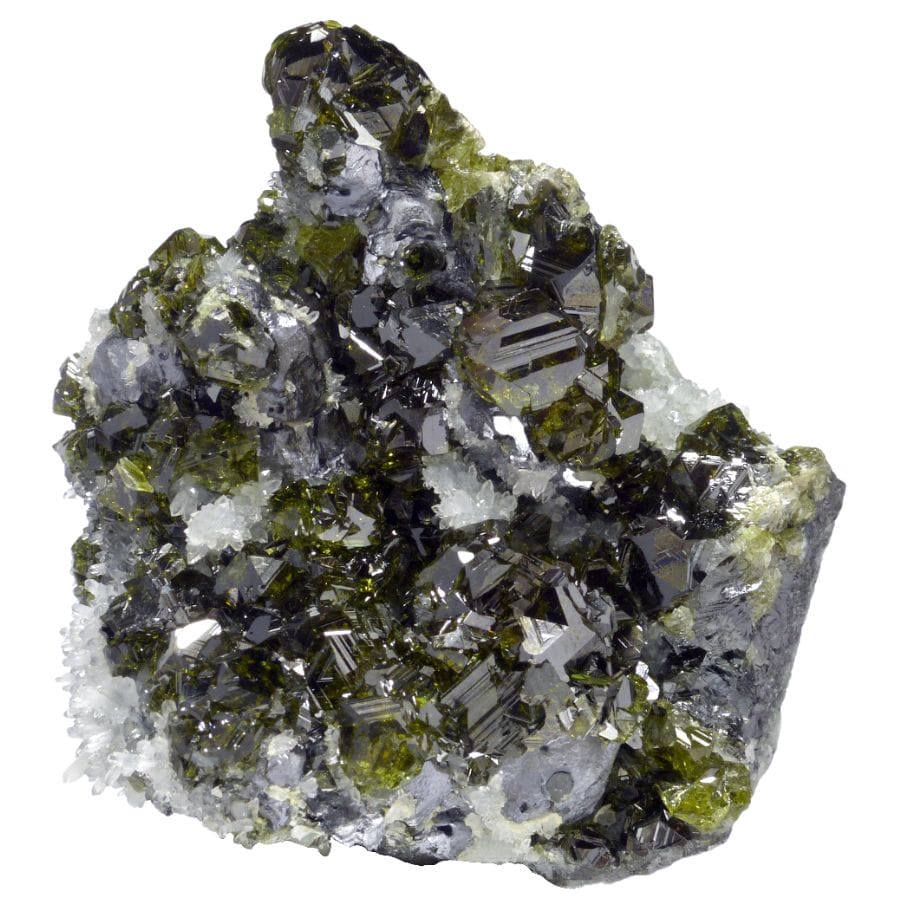
Sphalerite is the main source of zinc and it often has a shiny, metallic appearance. It can be found in a variety of colors, including yellow, brown, and black, depending on its iron content.
This mineral is known for its high dispersion, which means it can display brilliant colors when light passes through it. This characteristic makes it attractive for collectors and sometimes for use in jewelry.
Sphalerite is mainly used in the industry to extract zinc, which is essential for making metal alloys like brass. Zinc from sphalerite is also important in making batteries, paint, and rubber.
Where you can find sphalerite in New Hampshire
- Westmoreland
- Iron Mountain
- Shelburne
- Cannon Mountain
Titanite
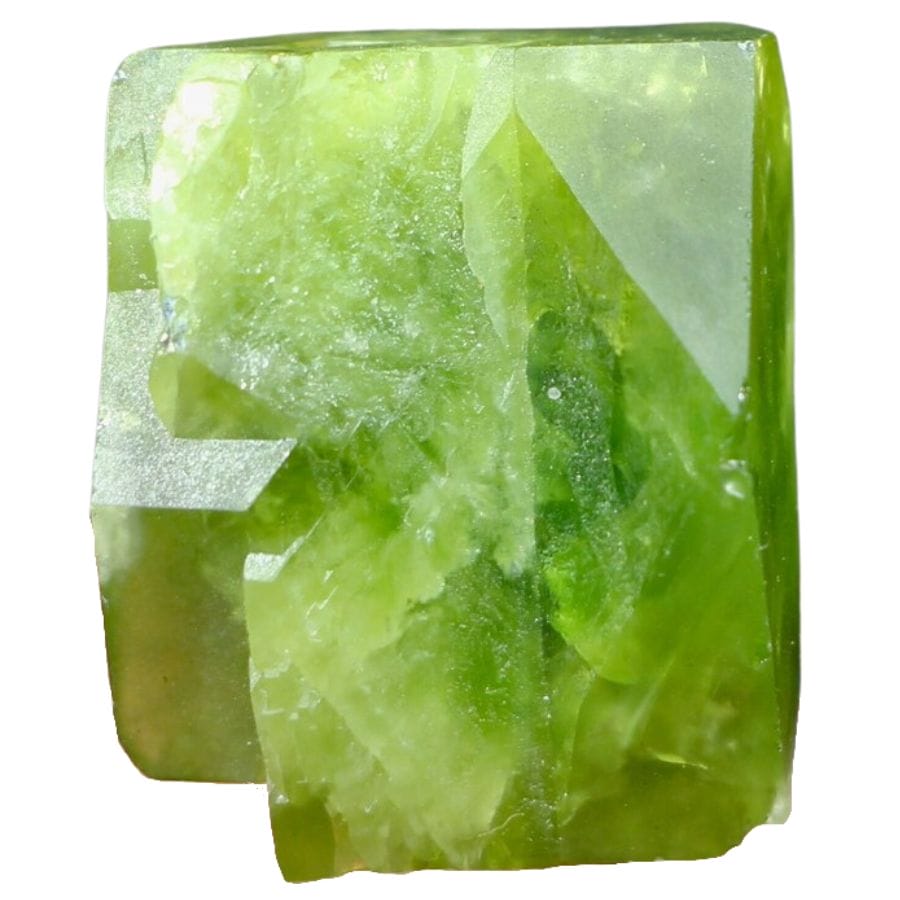
Titanite, also known as sphene, is a mineral that ranges in color from yellow to green to brown. It often forms in metamorphic rocks and is known for its wedge-shaped crystals.
Titanite is valued for its high dispersion, which is even higher than that of diamonds, making it sparkle brilliantly under light. This makes it a desirable gemstone for jewelry, despite its relatively low hardness.
In addition to its use in jewelry, titanite is important in the scientific community. It is used to date geological events since it contains uranium and thorium, which can be measured to determine the age of the rocks in which titanite is found.
Where you can find titanite in New Hampshire
- Belknap Mountains
- Amherst
- Great Bay National Wildlife Refuge
Vivianite
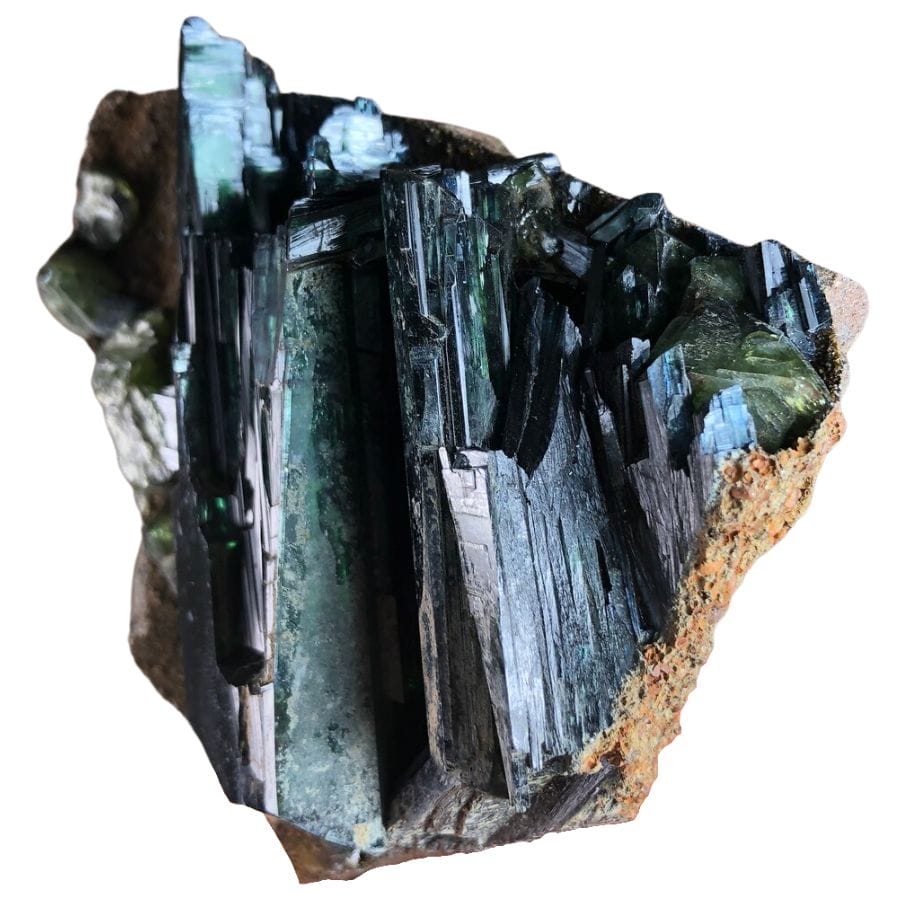
Vivianite is a mineral that starts off colorless and becomes deep blue when exposed to light. It is often found in sedimentary environments, like peat bogs, where it forms from the decomposition of organic material.
This mineral is known for its striking color change and transparent to translucent appearance. Collectors prize vivianite for its beauty and the way its color deepens with exposure to light.
While vivianite is not commonly used in jewelry due to its softness, it is sought after by mineral collectors. Its unique properties and color make it a fascinating addition to any collection.
Where you can find vivianite in New Hampshire
- Groton
- Parker Mountain
- Alstead
The Most Valuable Rocks and Minerals in New Hampshire
New Hampshire is rich in rocks and minerals that are valuable in many different ways. These natural resources play a crucial role in various industrial processes and more.
Galena
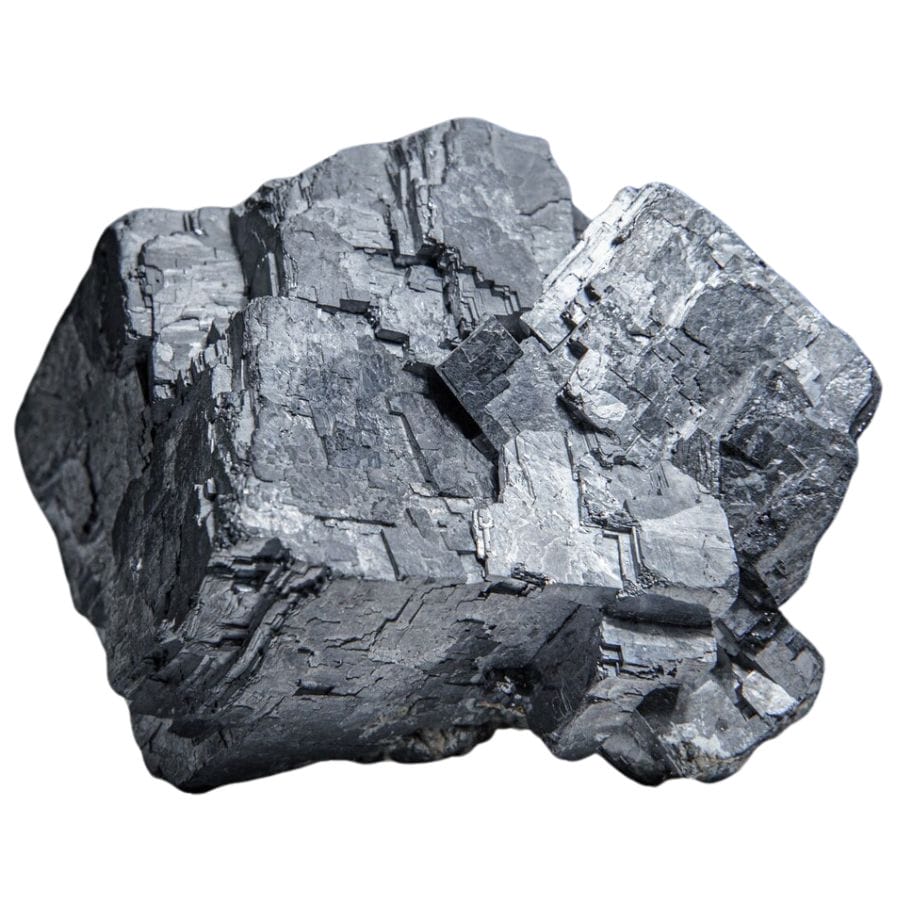
Galena is a shiny, gray mineral that is the main source of lead. It often forms in cubic shapes, which can be fascinating to look at because of their perfect angles and edges.
This mineral is also known for its high density, making it feel heavier than other minerals of the same size. Galena’s metallic luster and high density are clues that it contains metal, which is why it’s mined.
Besides being mined for lead, galena is sometimes collected by mineral enthusiasts. Its cubic crystals and shiny surface make it a favorite among collectors for its aesthetic appeal.
Where you can find galena in New Hampshire
- Carroll County
- Chesterfield
- Shelburne
Gold
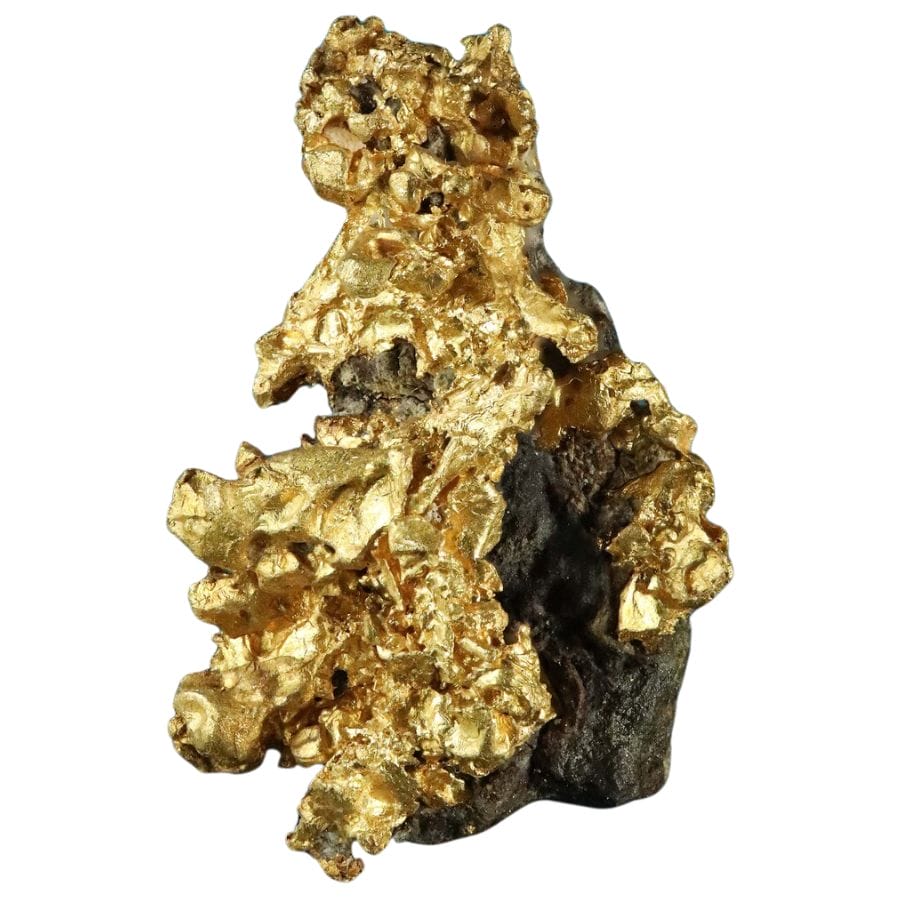
Gold is a shiny, yellow metal that has been valued by humans for thousands of years. It is found in nature as nuggets or grains in rocks, in veins, and in alluvial deposits.
Gold is soft and malleable, which means it can be shaped easily without breaking. This makes it perfect for making jewelry and decorative items that have been treasured by various cultures around the world.
Apart from its use in jewelry, gold is also used in electronics because it conducts electricity well and doesn’t corrode. This metal plays a critical role in the manufacturing of computers, smartphones, and other electronic devices.
Where you can find gold in New Hampshire
- Grafton County
- Sandwich
- Dalton
- Hollis
Hematite
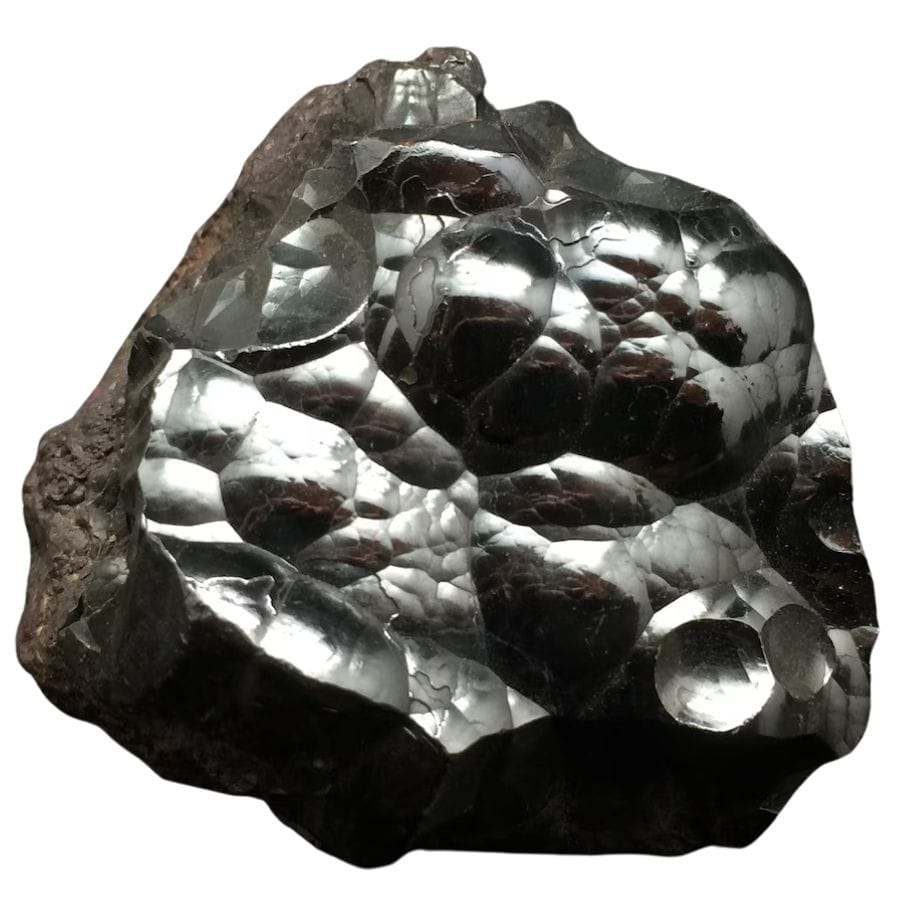
Hematite is a type of iron oxide that’s known for its shiny, metallic appearance and reddish-black color. It forms through the oxidation of iron-rich rocks and minerals.
This mineral is often used in jewelry and decorations because of its attractive luster and color. Hematite is also one of the valuable rocks in New Hampshire, where it’s collected for its beauty and rarity.
Besides its aesthetic uses, hematite plays a significant role in the steel-making process. The iron in hematite is extracted to produce steel, making it an important resource in the manufacturing industry.
Where you can find hematite in New Hampshire
- Mine Ledge
- Groton
- Milford
- Lisbon
Silver
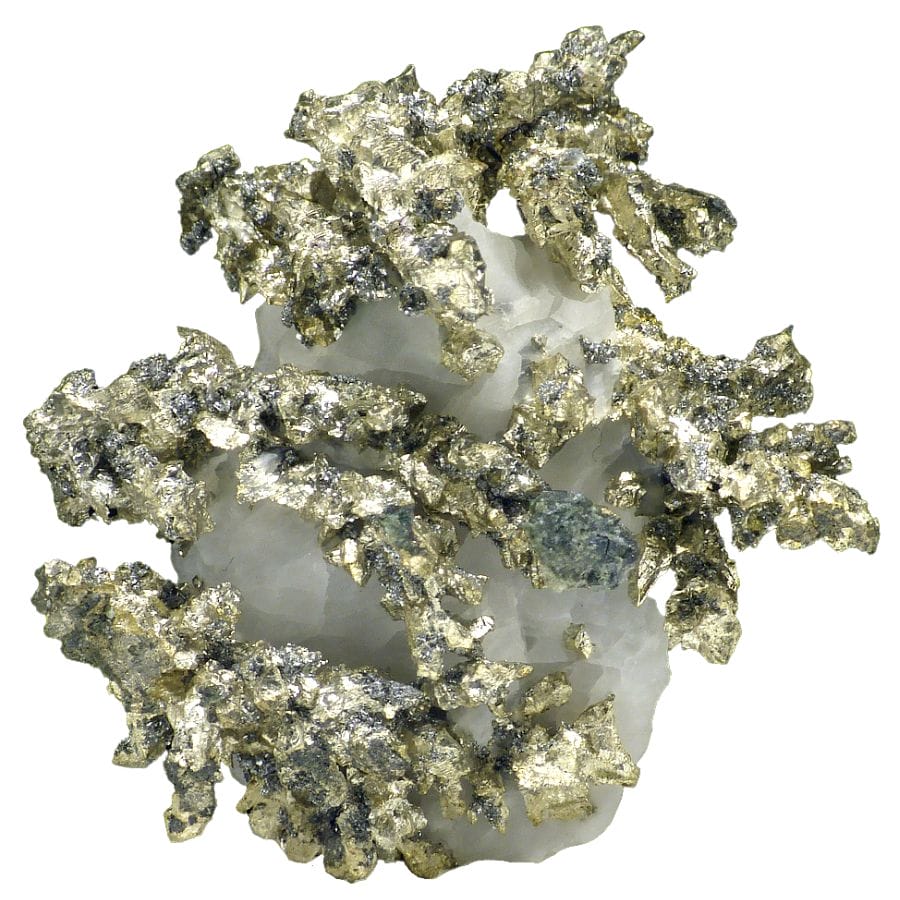
Silver is a shiny, white metal that is found in the earth’s crust. It is often discovered in ores that also contain other metals like copper, lead, and zinc.
This metal is known for its excellent conductivity of electricity and heat, making it valuable in various industries. Silver’s reflective quality also makes it ideal for making mirrors and coatings for glass.
Besides industrial uses, silver is widely used in jewelry and silverware because of its beauty and resistance to corrosion. It has also been used for coins and as an investment, stored in the form of bars or bullion.
Where you can find silver in New Hampshire
- Madison
- Bristol
- Goffstown
How to Identify The Rocks and Minerals Found in New Hampshire
Learning how to identify the gems, crystals, and rocks in New Hampshire can be an exciting adventure. Knowing what to look for can help you identify different minerals with more ease.
Check for Fluorescence
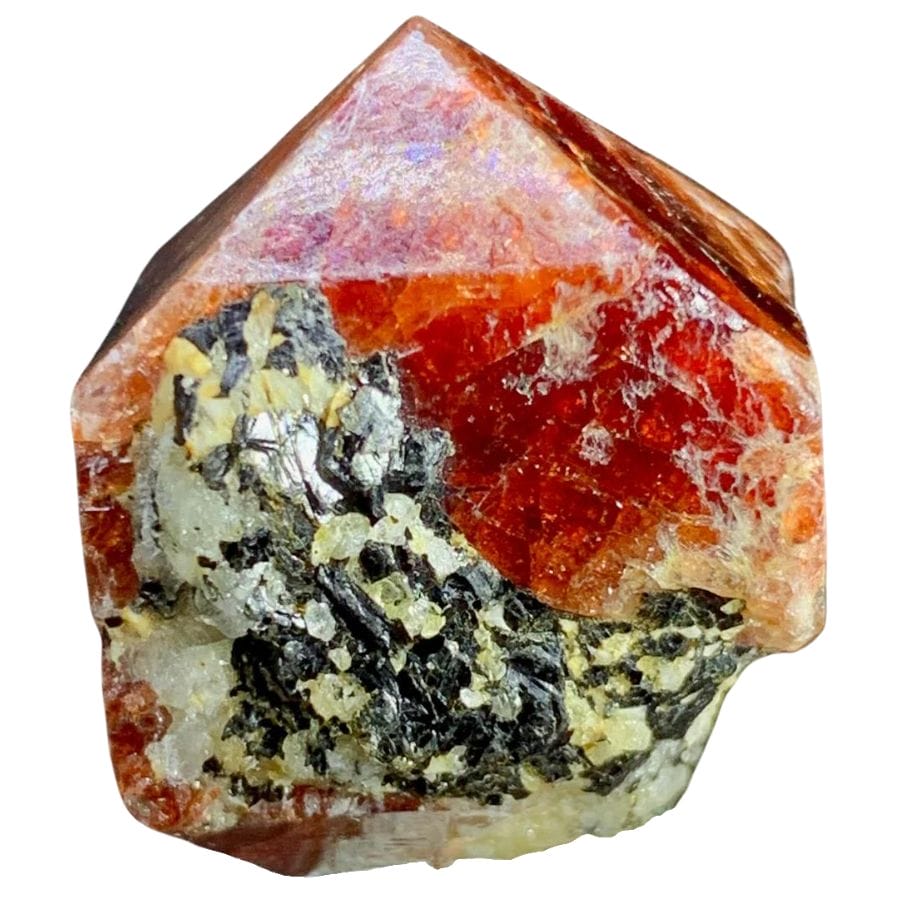
When looking at rocks, minerals, and gems, fluorescence can be a key feature to observe. Under ultraviolet light, certain minerals will glow with various colors, making them stand out.
This glowing effect happens because some minerals can absorb ultraviolet light and then emit it as visible light. For example, zircon can fluoresce with a mustard yellow color, while fluorite can show a range of bright colors under UV light.
Using fluorescence to identify rocks and minerals can be especially useful in a dark setting. Minerals like some opals can display a beautiful array of colors when exposed to ultraviolet light, aiding in their identification.
Assess the Weight
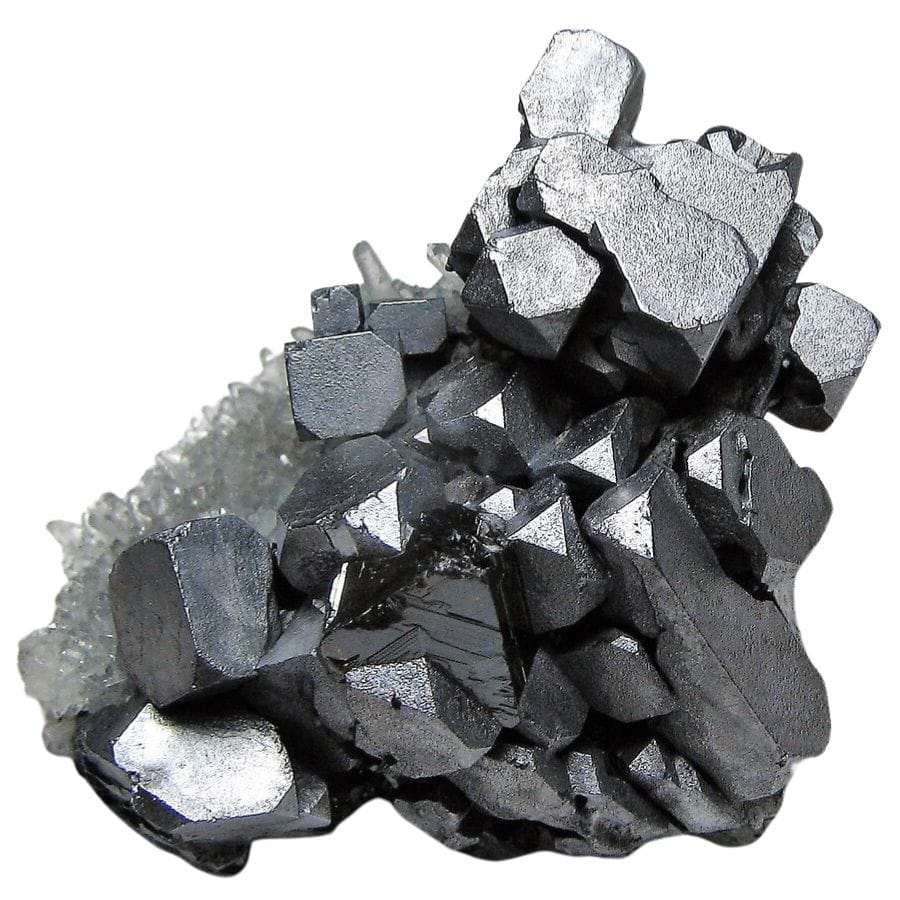
Feeling the weight of a rock in your hand can give you clues about what type of mineral it might be. Minerals vary in density, which is why some feel heavier than others even if they are the same size.
Galena, for example, is a mineral that feels surprisingly heavy for its size because it is made of lead. This heavy feeling is a hint that the mineral has a high density compared to others like quartz or amazonite.
When trying to identify rocks, minerals, and gems, consider how heavy they feel in your hand. This method can help differentiate between minerals with similar appearances but different densities.
Use a Magnet
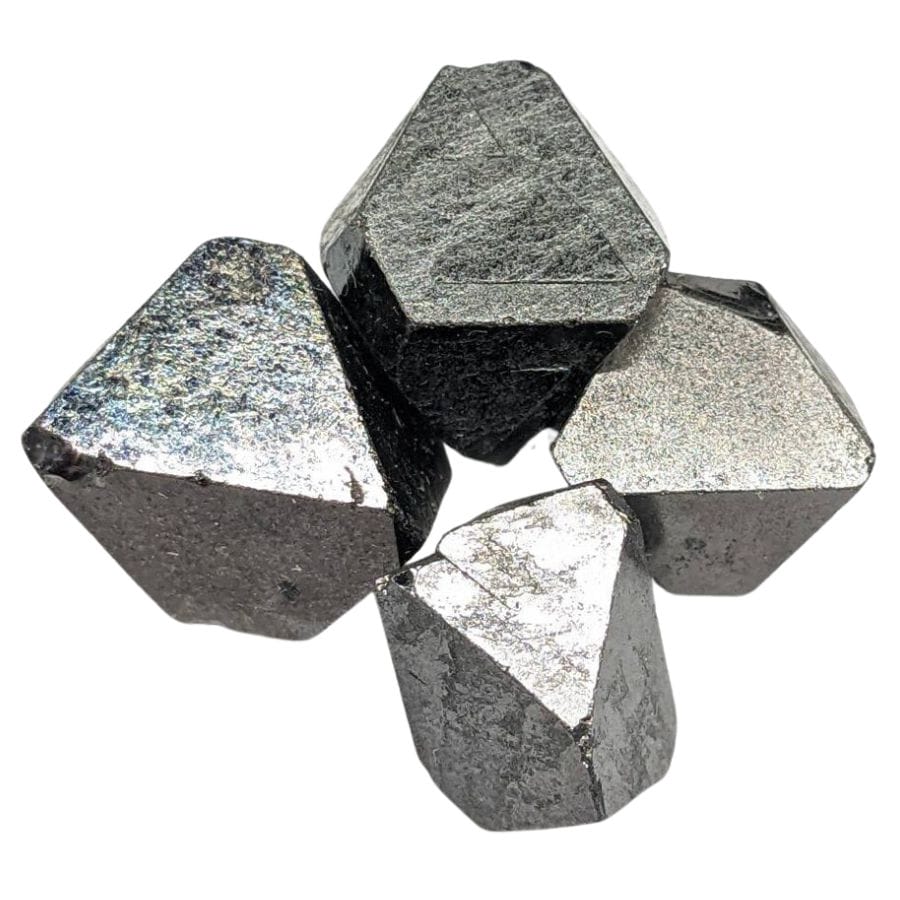
Testing a rock with a magnet is a simple way to see if it contains magnetic materials. If the magnet sticks to the rock, it might contain iron-bearing minerals like magnetite.
Magnetism is a key feature in New Hampshire rock identification because it can quickly help distinguish between different types of rocks and minerals. For example, finding a magnetic rock could mean you’ve discovered magnetite or a meteorite.
This method is especially useful for beginners because it requires only a magnet and the rock you want to test. It’s a straightforward way to learn more about the rocks you find.
Test for Hardness
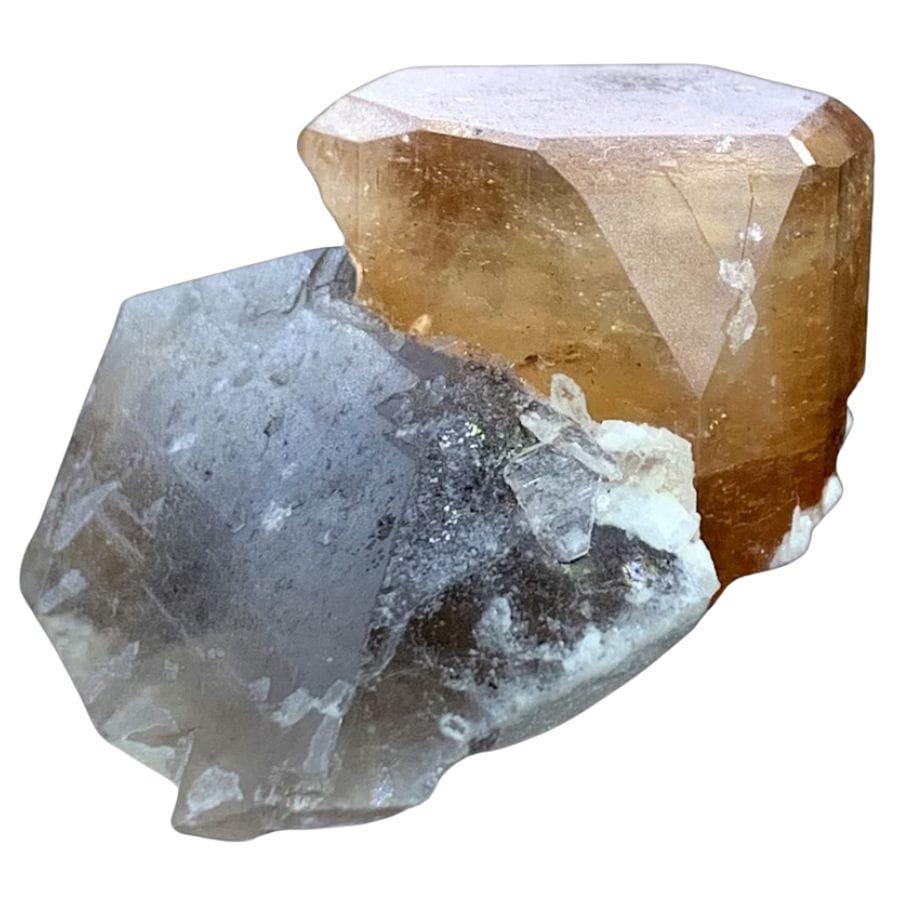
The Mohs scale of mineral hardness is a tool used to test how hard a rock or mineral is. By scratching the surface of the rock with objects of known hardness, like a fingernail or a copper penny, you can find out how hard the rock is.
If a fingernail can scratch the rock, it means the rock is very soft and has a low number on the Mohs scale. If the rock can scratch a copper penny, then it’s harder and higher up on the scale.
Topaz, for example, is much harder than fluorite, making it more resistant to scratches. While topaz scores an 8 on the Mohs scale of mineral hardness, fluorite is softer, with a rating of 4.
This method helps to compare the hardness of different rocks and minerals. Knowing the hardness of a mineral can help you identify it and understand where it might have formed.
Observe Cleavage and Fracture
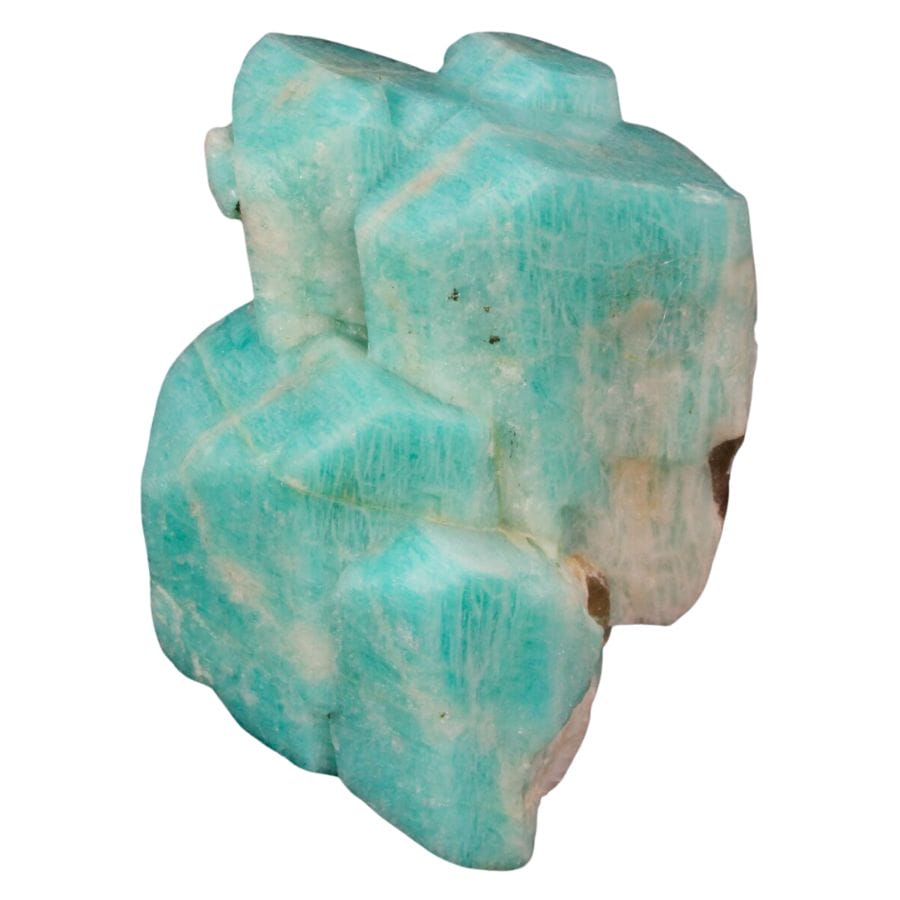
Cleavage and fracture are two ways that minerals break when they are hit or dropped. Cleavage means a mineral can split along specific planes to create flat surfaces, which can be a clue to its identity.
For example, amazonite has a very distinct cleavage that allows it to break cleanly. On the other hand, a mineral like quartz breaks with a fracture, resulting in uneven, jagged surfaces instead of smooth planes.
By looking at how a rock breaks, you can learn a lot about what minerals it contains. This knowledge can help you figure out what the rock is and where it might have come from.

